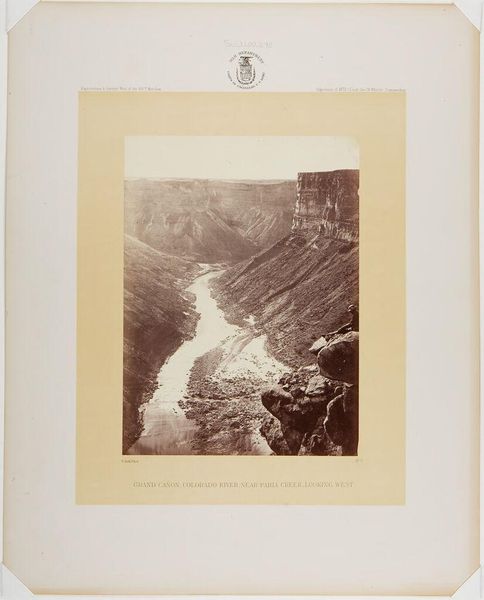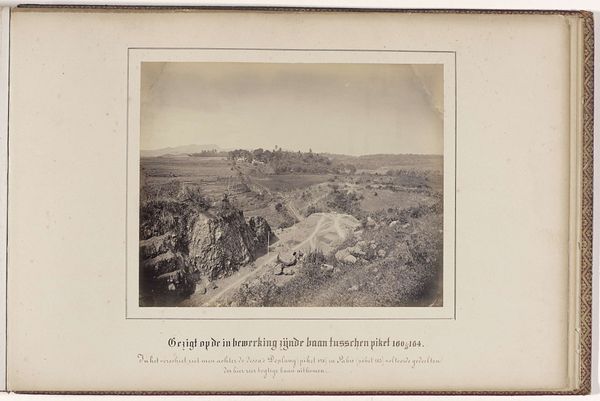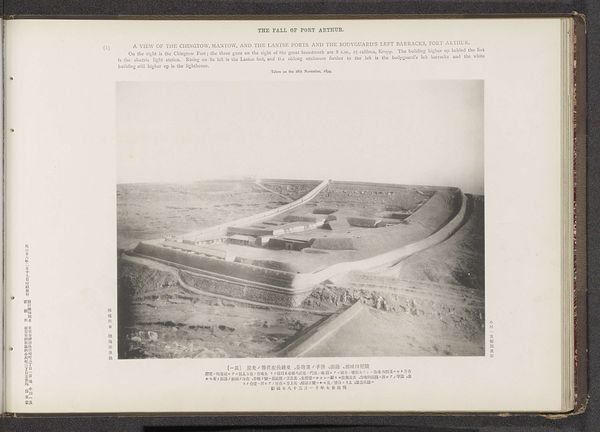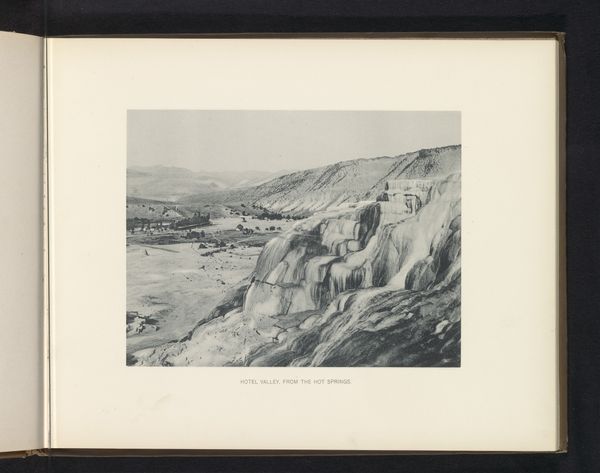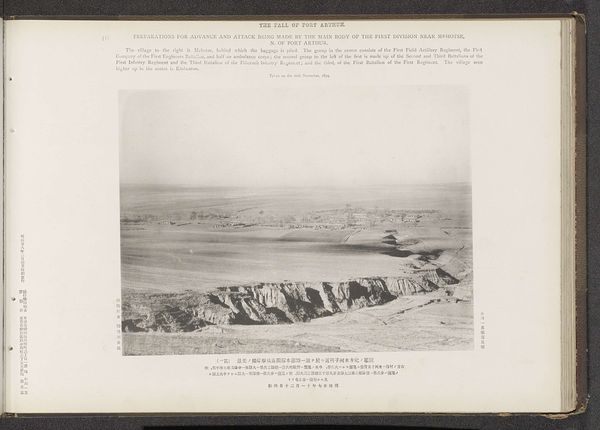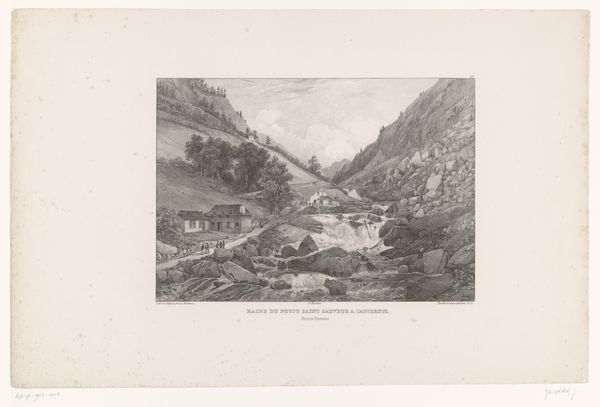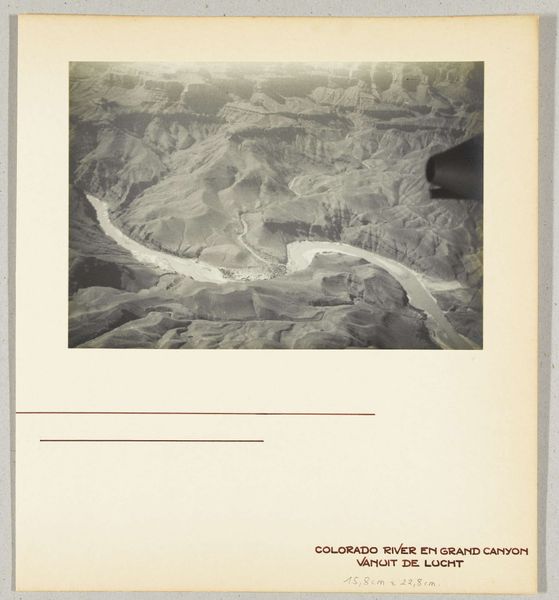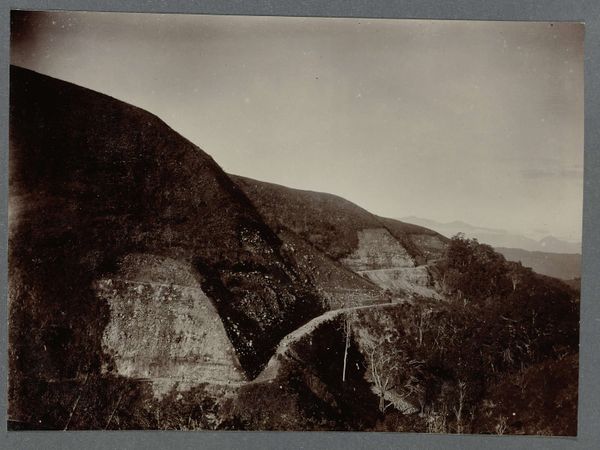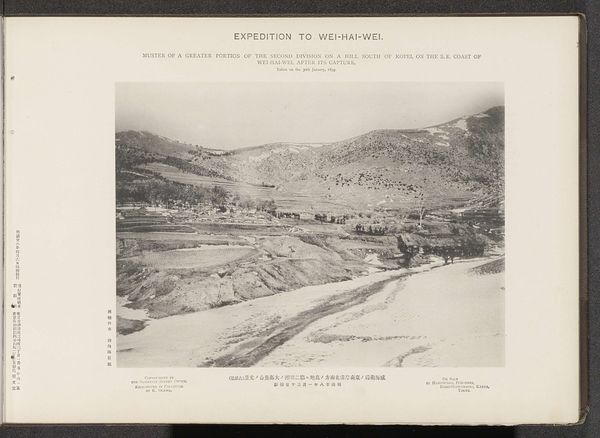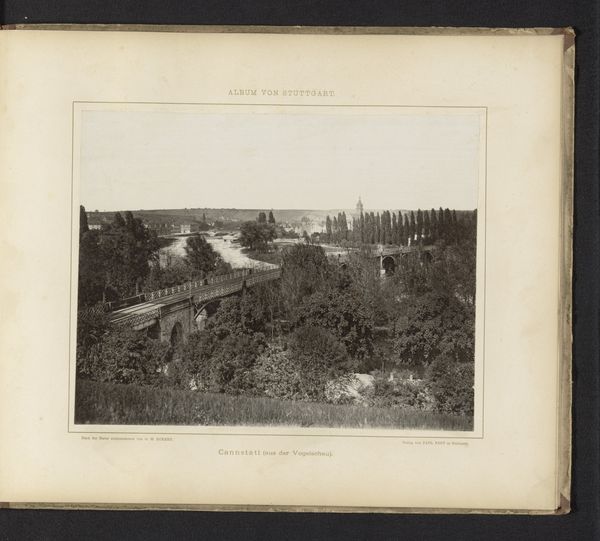
Gezigt achter piket 255 in de rigting van dessa Ngagrong. / De grond der ingraving 635 wordt met stortkarren naar de ophooging 234 vervoerd. De bouw- en werktuigkundige Kuntze geeft zijne bevelen aan den pikeur Hertel ... 1868
0:00
0:00
photography, gelatin-silver-print
#
landscape
#
photography
#
coloured pencil
#
gelatin-silver-print
#
realism
Dimensions: height 195 mm, width 245 mm, height 305 mm, width 450 mm
Copyright: Rijks Museum: Open Domain
Curator: Isn't it curious how photographs can whisper stories across centuries? This gelatin-silver print, "Gezigt achter piket 255..." by Woodbury & Page, circa 1868, presents what looks like an industrial scene... but there's also this lingering, haunting stillness. What’s your take? Editor: It's fascinating, the level of detail in this old photo! There’s something quite stark about the landscape. The deep trenches and the workers give it an almost oppressive feeling. I guess my question is: What would this scene have represented to someone viewing it back in 1868? Curator: Ah, that's the gold! This wasn’t just about documenting labor. The Dutch East Indies, like Java here, represented resource exploitation. I see ambition etched into this landscape, colonial reach clawing into the earth, would you agree? How might someone see a landscape reshaped, even violated? Editor: That's a perspective I hadn't fully considered. It makes sense now why that feeling of oppression stuck with me. Curator: Now, look at the light, the shadows. The play of light and shadow isn’t merely descriptive, it’s almost... accusatory, right? Highlighting both progress and... I shudder to say it... the collateral damage? Editor: I definitely agree! So it seems Woodbury & Page used their photography as commentary, beyond pure representation? Curator: Exactly! To ask these questions *with* the image, to make us see it— the layers upon layers of meaning beneath the dirt – perhaps that’s art in its highest form. It certainly gets under my skin, makes me squirm with contemplation. Editor: That really reframes how I see the photograph, it gives me a fresh appreciation! Curator: It’s about more than what is depicted; it’s what’s implied, what’s been buried, unearthed… quite like the excavation itself. Food for thought, yes?
Comments
No comments
Be the first to comment and join the conversation on the ultimate creative platform.



